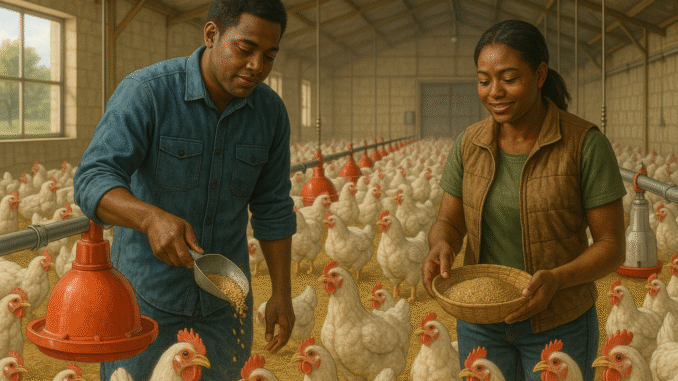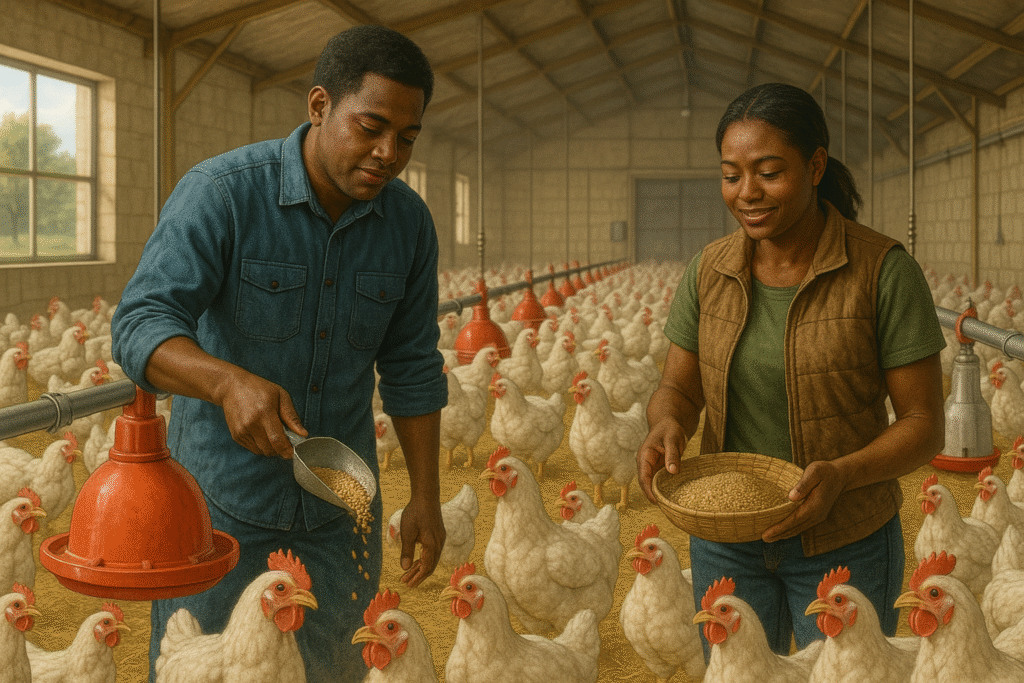
As of 2022, the largest proportion of live animals in Nigeria were occupied by chickens. The stock of chickens amounted to roughly 249 million heads that year.
On poultry farms, feed costs can significantly impact overall profitability. Often, farmers stick to conventional feed options that may strain their budgets. However, there are several alternative and cheaper feed options that many poultry producers may have overlooked, which can provide nutritional value while being cost-effective.
One such alternative is kitchen waste, which includes vegetables, fruits, and even grains. Many poultry farmers can collect leftovers from local restaurants or supermarkets, making this option economically viable. These scraps need to be carefully processed and monitored for mold or spoilage to ensure the health and safety of the birds. When done correctly, kitchen waste can add variety to the diet of poultry, promote better growth, and reduce feed costs.

Another resource that is often underutilized is by-products from food processing industries. For example, spent grains from breweries and milling by-products are excellent sources of nutrients and can be fed to poultry. They are usually available in large quantities and can be acquired at a low cost or even for free. By incorporating these by-products into the diet, farmers can provide protein and energy while minimizing their reliance on conventional feed sources.
Insects are gaining popularity as an alternative feed source for poultry. Black soldier fly larvae and mealworms are particularly rich in protein and fats. Many farmers have started to raise these insects on organic waste materials, essentially creating a sustainable feed source. Although there may be an initial investment in setting up insect farming, the long-term savings on feed costs can be substantial. insects provide a high-quality protein source that enhances the nutritional profile of poultry diets.
Another often ignored feed option is forages, such as clover, alfalfa, and various green plants. Foraging can significantly supplement the energy needs of poultry and improve their overall well-being. These forages not only provide essential nutrients but also promote natural foraging behavior, which is beneficial for the birds\' mental health. By planting suitable forage crops, farmers can reduce their reliance on commercial feeds and improve their sustainability practices.
Legumes are frequently overlooked as a source of protein for poultry. Beans, peas, and lentils can be cultivated relatively easily and can serve as a high-protein feed option. They are also rich in essential amino acids that are necessary for optimal growth and egg production. Incorporating legumes into the poultry diet can help reduce overall feed costs while providing a potent nutritional punch.
Incorporating these alternative feed sources into your poultry farm can lead to significant savings and enhanced nutritional variety for your birds.
Although this alternative feeds can help poultry farmers but it is also very important to consult professional feed formulators and also important to monitor your poultry’s health and productivity closely to ensure they are receiving a balanced diet. With a little creativity and very resourcefulness, you can transform the way you feed your flock and boost your farm’s profitability at the same time.